This website discusses worldviews of Indigenous peoples and Westerners. One comparison, is the view on truth. The Indigenous view on truth is that there can be many as one’s personal experiences can dictate what is true. While the western view is that there can only be one truth. Not surprisingly, one of these worldviews is dominant in the education system. As I read through the comparisons, I get the sense that many non-Indigenous peoples would agree with the Indigenous worldviews yet they probably don’t give much thought to accepting the western belief.
Author Archives: michael orlandi
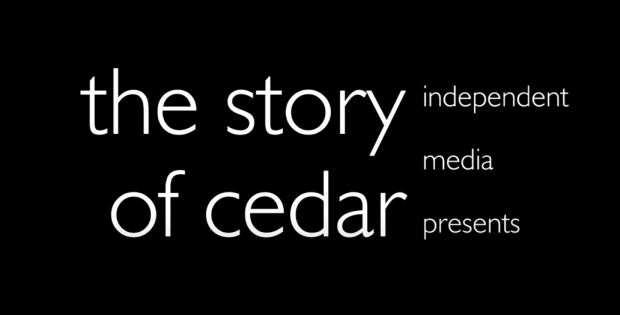
M4. P4. – Coast Salish Peoples Connection to Cedar
Herb Rice, a well respected Coast Salish carver speaks on the importance of the cedar tree to his people. The video touches on the various uses of cedar, but also on the relationship with the tree. It is one that often does not exist in high school wood shops. As my final project looks at Indigenous and European values in shop class, this video sheds some light on the different views of materials, consumables and our relationship with them. I have always thought that high school wood shops offer great opportunities to discuss conservation and respect for wood products. Coast Salish approaches to woodworking have these themes embedded in their practice.
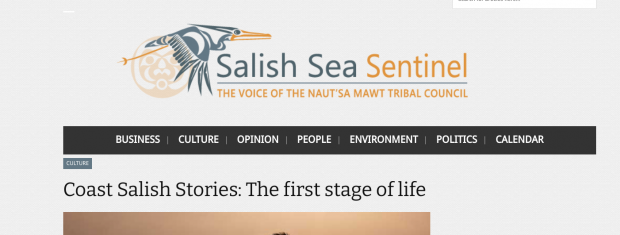
M4 – P3 – First Stage of Life
A short, but interesting article to me. Celestine Aleck (Sahiltiniye) is a mother, and member of Snuneymuxw First Nation located in present day Nanaimo on Vancouver Island. She speaks of the first stage of life. For young Coast Salish peoples, this is the time when they go from children to adults. These cultural traditions include taking river baths and learning life skills such as hunting. This period of learning “how to be” differs greatly from the European version. When comparing the two, you can see what version is better supported and understood in the educational setting.
https://salishseasentinel.ca/2018/06/coast-salish-stories-the-first-stage-of-life/
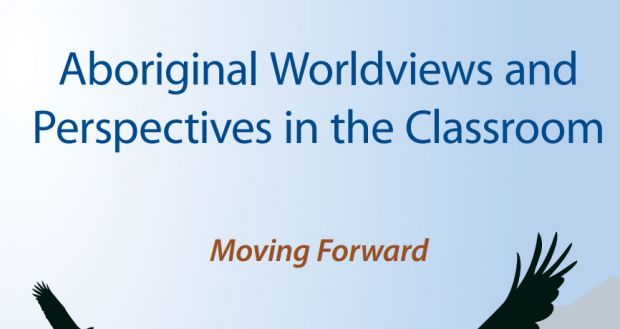
M4 – P2 Worldviews/Perspectives in the Classroom.
Since I am looking at Indigenizing high school shop class as my final project, it would be fitting to explore this document released from the BC Ministry of Education. It came out in 2015 and is entitled “Aboriginal Worldviews and Perspective in the classroom.” This is a fairly long document, and includes details such as how the document came to be.
A part I enjoyed in the document was that it encouraged educators to learn from local First Nations as worldviews can be tied to local lands. Incorporating local First Nation’s worldviews in the classroom is much more meaningful than the popular generic Indigenous perspectives that are a little more well known.
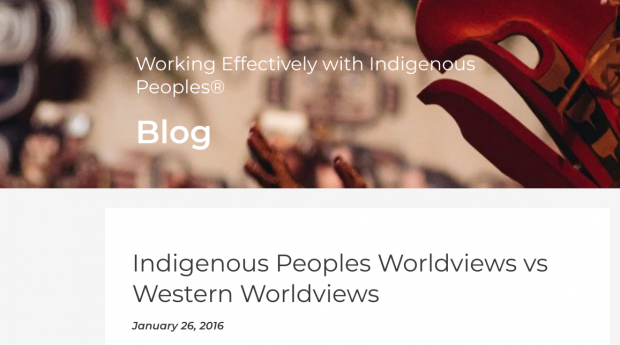
M4 – P1 Worldviews
This website discusses differences in western worldviews and Indigenous worldviews. They are fairly opposite approaches to knowledge, connectedness, and science. When understanding the differences, you can see how the education system typically does not support Indigenous worldviews. For my final project, I am looking at Indigenizing high school shop class and this site helps to understand the western pedagogy that is typically implemented.
Western Worldviews and Indigenous Worldviews
M. 3 P. 5 – First Nations, Inuit, and Metis Perspectives in Curriculum.

https://www.learnalberta.ca/content/aswt/kinship/#observing-practice
This digital resource was put forth by the Alberta Education system. It provides authentic information on 12 topic areas. These areas are kinship, aboriginal and treaty rights, healing historical trauma, worldviews, oral traditions, elders, symbolism and traditions, connection to land, Indigenous pedagogy, culture and language, well-being, and traditional environmental knowledge. Each section usually contains 3 or 4 subsections with information that can assist one in understanding Indigenous perspectives towards education. There are many videos from elders and others of high standing throughout the sections. I found that there are similarities between the sections, which help paint an overall view of where Indigenous perspective may be coming from. A lot of information on a very easy to navigate website.
M. 3 P. 4 Indigenous Architecture in Canada
The National Trust is a Canadian Charity that has a goal of saving of preserving national historic sites and buildings. By working with partners, donors and finders, the National Trust offers various tools so to assist maintaining heritage sites and buildings.
The group feels as if Canada’s call to action was a missed opportunity to address how architecture could play a role in reconciliation. The website mentions some interesting points. One being the how Indigenous communities are willing to showcase their culture through modern building designs, and there lies a great opportunity with the booming construction industry. Many designs can come with a learning center, such as a museum. One sentence I connected with was “how a cultural group depicts itself architecturally is a manifestation of that culture’s desire to persist.” The opportunity of modern architecture incorporating Indigenous structural buildings elements as a means to assist in reconciliation was not something I initially thought of, but this website brought up some valid points.
M. 3 P. 3 – Coast Salish Drum
This video showcases the making of a traditional Coast Salish Drum by Jorge Lewis who is part of the Snuneymuxw nation located in Naniamo, Vancouver Island. This video may appeal to me more than others as I appreciated the craftsmanship, and appropriateness of the video towards showing high school students. Another appreciation I had of the video was the way Jorge used knowledge passed down from his family towards making the drum. For example, instead of relying on a math equation to layout the holes on the hide equally, he used a clever folding technique. He also relied on his experience of hand placement to tighten up the lace. While doing all this, he stressed how the prayer was the most important part leading to his success. The combo of highly applied knowledge and low reliant on special tools also appealed to me. This is a project that can be attempted in a school setting with the correct individual leading the activity.
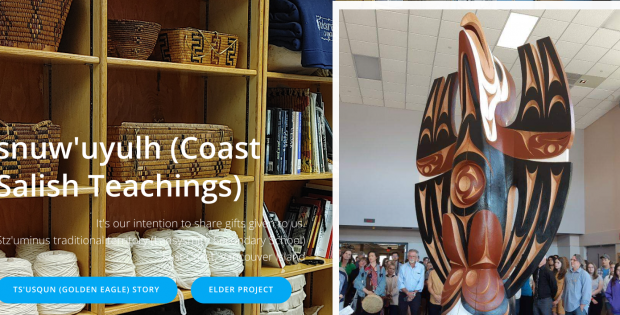
M.3 P.2 Land and Language Based Learning Program – Ladysmith Secondary School
The Land and Language Based Learning Program is offered at Ladysmith Secondary school on Vancouver Island. Located roughly 1.5 hours away from where I live, I had no idea that such a powerful program existed. The program was created by Mandy Jones, a member of the Snuneymuxw First Nation, and William Taylor.
The website explains what the course is all about, and tells of a particularly impressive project undertaken by the program. The program created an eagle sculpture, house posts, and traditional weaving to stand in the school foyer. It was a beautiful display of Coast Salish craftsmanship. The project was a massive undertaking, that required dedication from many people at various levels in education. The process, from selecting the log, to raising the structure is outlined well on the website. What I noticed is because the massive project took a considerable amount of time, investment, patience, knowledge, learning, etc., it became a big part of many people’s lives. Imagine a gigantic woodworking project taking place at the entrance of a school for many years. Students and staff working on it early in the morning, during the day, and after school. It builds a sense of community, and questions what is typically valued in a western educational system.
M.3 – P. 1 More on First Peoples Principles of Learning
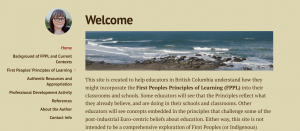
Jo’s website on First Peoples Principles of Learning
This website, created by Jo Chrona, assist BC educators towards incorporating the First Peoples Principles of Learning in their classroom. This is done not just by giving examples of lessons, but Jo explains the importance of all the aspects that contribute to the classroom environment. For example, the educators philosophy and disposition can be just as important as the content. Or the understanding of why the First Peoples Principles of Learning was formed can then better assist in implementation. This is why I like this site. It is so much more than listing the principles and giving examples. Jo has a great deal of experience in the BC educational system, including a Masters in Educational Technology. I would assume she has gone through the MET program.
Anyone whose final project involves decolonization. Perhaps around their teachable subject, such as my final project. They will be looking at First Peoples Principles of Learning at some point. This resource dives a bit further in and could be of use.